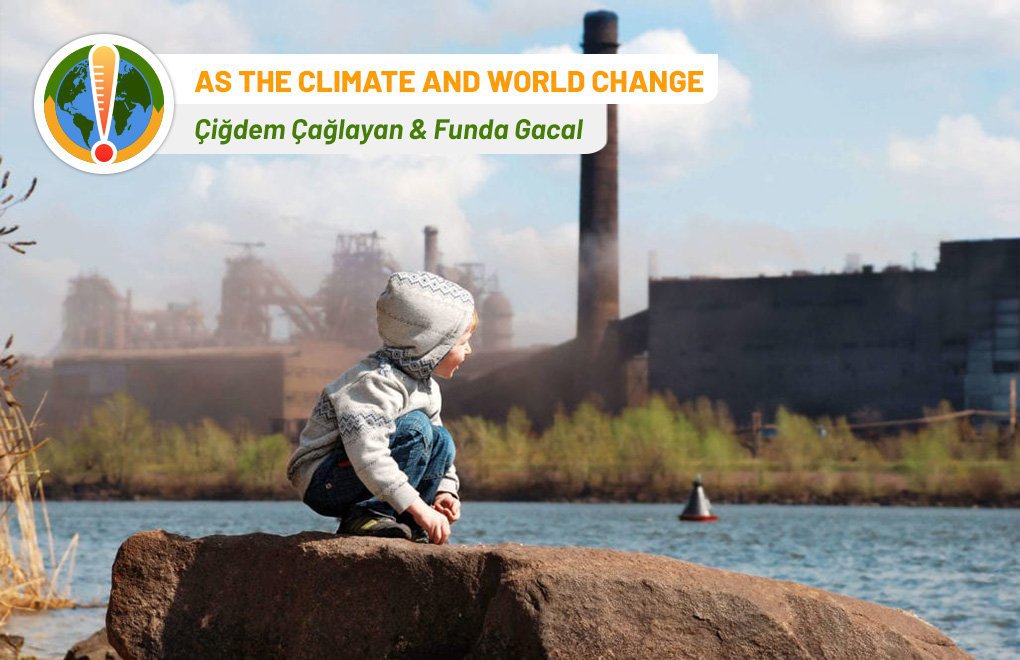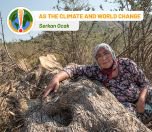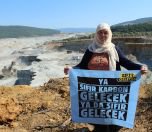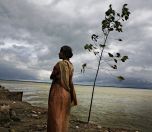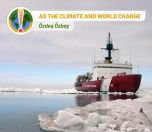Click to read the article in Turkish / Kurdish
Climate change has begun to change our world in an unprecedented way. We are witnessing more frequent and severe floods, droughts, changes in precipitation regime, as well as heat and water stress.
These phenomena have devastating effects in many parts of the world, particularly in areas where many of the world's poorest and most vulnerable children live.
According to the United Nations Children's Fund (UNICEF) 2015 report, there may be no greater, growing threat facing the world's children - and their children - than climate change.
Almost half of the burden of disease is on children
According to the World Health Organization (WHO), one-third of the current global burden of disease and about a quarter of deaths are due to environmental factors. Despite making up only 10 percent of the world's population, children under the age of five bear more than 40 percent of this burden.
Similarly, 88 percent of the current global burden of disease due to climate change is on children living in developing countries and low socioeconomic status populations worldwide.
It is estimated that 26 percent of childhood deaths and 25 percent of the total burden of disease on children under five could be prevented by reducing environmental risks such as air pollution, unsafe water, poor hygiene, or chemicals.
Why are they more affected?
Children are not little adults; they are more sensitive to environmental risks than them. Since children are in rapid growth and development, these processes can easily be disrupted due to peripheral impacts. Developing systems are too sensitive to environmental effects and cannot repair the damage.
Because of their immature detoxification, immune and thermoregulatory systems, developing fetuses and young infants are biologically and psychologically more vulnerable than adults to the many adverse effects of climate change-related heat waves, toxic air pollutants, nutrient deprivation, infectious agents and fossil fuel combustion.
Children are more exposed to contaminants
During the first six months of life, infants drink seven times more water and eat three to four-time more food per pound than adults. An infant at rest receives air more than twice than adults. Therefore, children are much more affected by any toxic factor present in water, food, or air.
Children who live more indoors during infancy spend most of their time outdoors during childhood. While chemicals used in the home, cigarette smoke, and gases affect babies more, the risk of exposure to particulate matter and other toxic gases is higher in the outdoor environment.
.jpg)
What risks do they face?
Children, especially infants, will have to contend with urgent and life-threatening dangers such as climate-related disasters, food insecurity, increased air pollution, increased risk of vector-borne diseases, acute respiratory infections, diarrheal diseases, and malnutrition.
Evidence is increasingly showing that these risks can have a distinctly harmful effect on a child's early development.
Children amid climate disasters
The number of children potentially exposed to climate risks is alarming. Today, more than half a billion children live in extreme flooding zones. About 160 million live in areas of high or extremely high drought severity. While climate change will eventually affect every child, these children are already in danger and face some of the most urgent risks.
Climate change does not affect everyone equally. Flood and drought zones often overlap with areas of high poverty and low access to essential services such as water and sanitation. A child living in poverty or deprived of adequate water and sanitation prior to the crisis will be more affected by a flood, drought, or storm, less likely to recover quickly, and be at even greater risk in a subsequent crisis.
Also, the regions with the highest child populations in the world (for example, the coasts of South Asia, the Nile river basin, Equatorial Africa, and the Pacific coast of Latin America) are significantly affected by the flood, drought, water, and heat stress.
Those most exposed to climate risks are also likely to experience recurrent crises. These will make it more difficult for economically disadvantaged families and children to recover, and climate change will significantly increase these challenges.
Increasing diseases
Climate change - because of rising temperatures and changes in precipitation regime - is leading to the spread of vector-borne diseases such as malaria and dengue fever. Children are much more vulnerable to vector-borne diseases and other diseases such as diarrheal ones linked to poor water quality, poor sanitation, and poor hygiene practices.
It is estimated that malaria caused 438 thousand deaths in 2015; more than two-thirds were children under five. Children are also more sensitive to malnutrition. Diarrheal diseases are the leading cause of death in children under the age of five and are estimated to have resulted in 530 thousand deaths only in 2015.
Children will pay the price of the actions of adults
Children, especially young children, depend on adults for their survival and development. Besides the direct risks of climate change, children are also affected when climate change hits their parents and other caregivers.
Moreover, when climate change leads to conflict over dwindling resources, children will still pay the price of the actions of adults.
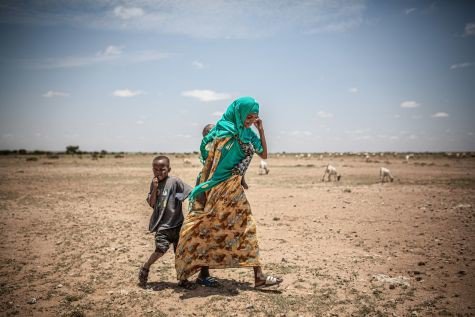
Air pollution
Climate change affects the air we breathe indoors and outdoors. It influences weather patterns that affect the levels and location of outdoor air pollutants, such as ground-level ozone and fine particulate matter.
Moreover, the use of fossil fuels directly releases numerous pollutants into the air. Poor air quality also negatively affects the respiratory system and cardiovascular systems. Developing fetuses and young children are the most vulnerable to air pollutants.
Allergens in the air are increasing
Increased carbon dioxide levels promote the growth of plants that release airborne allergens (aeroallergens), too. These changes in outdoor air quality and aeroallergens affect indoor air quality because pollutants and aeroallergens infiltrate into homes, schools, and other buildings.
Higher pollen concentrations and longer pollen seasons can increase allergic sensitization and asthma cases, limit productivity at work and school.
Lower respiratory tract infections are among the top causes of death in children, accounting for 5.5 percent of deaths in children under five in 2015.
While 13 percent of lower respiratory tract infections in developed countries are attributed to outdoor air pollution, more than 50 percent in underdeveloped and developing countries are associated with indoor and outdoor air pollution.
Acute deaths can be reduced
Globally, 93 percent of children live in environments where air pollution levels are above the WHO limit values. According to a study we conducted in 2018, 19 million children (0-14 years old, 23 percent of the population) in Turkey are exposed to an average of 49 μg/m3 PM10.
The same study suggested that if PM10 concentrations in each city were reduced to WHO limits, 9,959 hospital admissions (respiratory, cerebrovascular, and cardiovascular combined), 17.8 percent of acute deaths and 11.9 percent of infant deaths could be prevented in 2018. [1]
Socio-economic inequalities in air pollution
As is the case in floods or droughts, the poor are disproportionately exposed to air pollution. For instance, low-income and colored communities in the United States are disproportionately exposed to particulate air pollution caused by coal-fired power plants.
Exposure to toxic factors and the effects of climate change are more common in poor people due to reasons such as malnutrition and lack of adequate social support. Of the total world population of 7 billion, 1.9 billion are children under 15, and 1 billion live in poverty.
The striking socioeconomic disparities that currently exist in child health within and among countries will continue to grow in line with projected global fossil fuel consumption and climate change trends.

Credit: AA
Problems continue into adulthood
Prenatal exposures to environmental influences increase the risk of growth and developmental delays, neurodevelopmental and respiratory problems, as well as heart disease, chronic obstructive pulmonary disease, and diabetes and cancer in adulthood.
Developmental problems such as Attention-Deficit/Hyperactivity Disorder (ADHD), which is now common among children, have been associated with exposure to air pollution early in life.
There is substantial evidence that exposure to pollution in early childhood affects not only health but also educational achievement and IQ scores. These problems persist into adulthood and negatively affect professional and personal life, increasing healthcare costs for individuals and families.
We have the necessary knowledge to take action
To sum up, while climate change and air pollution pose universal threats, tackling them is mandatory for equality. Failure to tackle climate change will harm the poorest and most vulnerable children first. It will deepen socioeconomic and health inequalities.
The danger will escalate unless we act vigorously to stop the climate crisis now. Children deserve to live in a world free from the life-threatening effects of climate change. We have sufficient knowledge and scientific evidence to ensure this. The most important thing is to take action.
[1] Gacal F, Çağlayan Ç. (2020). Benefits of Reducing PM10 Pollution to WHO Standards for Children Health in Turkey. Abstract for 10th International Conference Children's Health and Environment, 2020.
(ÇÇ-FG/SO/EÜ/SD)
"As The Climate and World Change" article series*
Our life becomes history while we live! - Ömer Madra
1/ A country outside of the global climate policy: Turkey - Ebru Voyvoda
2/ Climate change, securitarian policies and ghosts - Özdeş Özbay
3/ Turkey's energy policy: Indigenous at home, Blue Homeland in the world - Emre İşeri
4/ The impact of climate crisis and fossil fuels on child health - Çiğdem Çağlayan & Funda Gacal
5/ We will see beautiful days, coal-free and sunny days-Elif Ünal
6 / Either capitalism or the future - Tuna Emren
7 / The three pillars of climate journalism: Science, politics, and social justice - Ece Baykal Fide
8 / Bringing science, struggle, and art together - Yasemin Ülgen
9 / Clean energy or betrayal? - Serkan Ocak
10 / It is time to say stop economic growth - Fikret Adaman & Gökçe Yeniev
11 / When climate refugees knock on our door - Mehmet Mücteba Göktaş
13 / Climate crisis affects women, women affect climate struggle - Merve Özçelik
14 / Climate fiction in literature- Buket Uzuner
15/ Dr. Faustus and children in the age of fire- Ömer Madra
* This series of articles is published with the financial support of Oslo Metropolitan University (OsloMet) Journalism & Media International Center.




.jpg)

